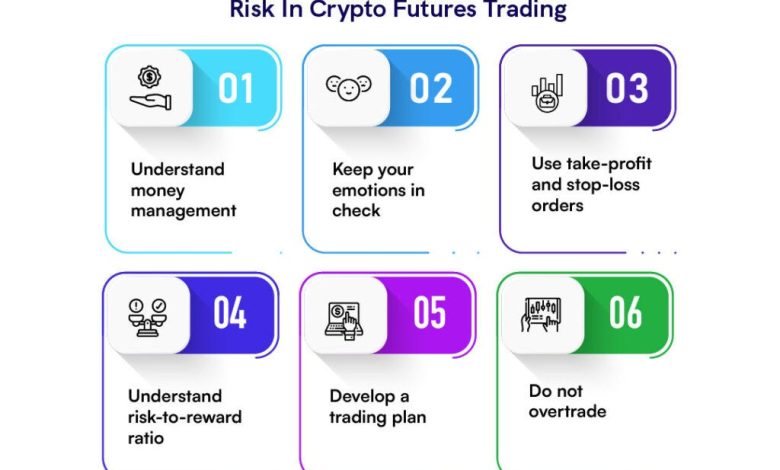How to Develop a Risk Management Strategy for Crypto Investments

- Understanding the importance of risk management in crypto investments
- Identifying potential risks in the volatile world of cryptocurrencies
- Setting clear investment goals and risk tolerance levels
- Diversifying your crypto portfolio to minimize risk
- Implementing stop-loss orders and other risk mitigation techniques
- Staying informed and adapting your risk management strategy as needed
Understanding the importance of risk management in crypto investments
Understanding the significance of risk management in cryptocurrency investments is crucial for any investor looking to navigate the volatile market successfully. Cryptocurrencies are known for their price fluctuations, which can lead to significant gains or losses in a short period. By implementing a robust risk management strategy, investors can mitigate potential losses and protect their investment capital.
One of the key aspects of risk management in crypto investments is diversification. By spreading investments across different cryptocurrencies, industries, and asset classes, investors can reduce the impact of a single asset’s poor performance on their overall portfolio. Diversification helps to spread risk and minimize the potential for catastrophic losses.
Another essential component of risk management is setting stop-loss orders. Stop-loss orders are predetermined price levels at which an investor will sell their cryptocurrency to limit losses. By setting stop-loss orders, investors can protect themselves from emotional decision-making and prevent significant losses in the event of a market downturn.
Additionally, conducting thorough research and staying informed about market trends and developments is crucial for effective risk management. By staying up-to-date with the latest news and analysis, investors can make informed decisions about their investments and adjust their strategies accordingly to minimize risks.
In conclusion, understanding the importance of risk management in cryptocurrency investments is essential for any investor looking to navigate the market successfully. By implementing a diversified portfolio, setting stop-loss orders, and staying informed about market trends, investors can protect their capital and increase their chances of long-term success in the crypto market.
Identifying potential risks in the volatile world of cryptocurrencies
Identifying potential risks in the volatile world of cryptocurrencies is crucial for developing a solid risk management strategy. The cryptocurrency market is known for its unpredictability and susceptibility to various external factors. By understanding the risks involved, investors can make informed decisions to protect their investments.
One of the main risks in the cryptocurrency market is price volatility. Cryptocurrency prices can fluctuate dramatically in a short period, leading to significant gains or losses for investors. This volatility is influenced by factors such as market demand, regulatory developments, and technological advancements. It is essential for investors to be aware of these factors and monitor market trends closely.
Another risk to consider is security threats. Cryptocurrencies are stored in digital wallets, which can be vulnerable to hacking and cyber attacks. Investors should take precautions to secure their wallets and use reputable exchanges to minimize the risk of theft. Additionally, scams and fraudulent schemes are prevalent in the cryptocurrency market, so investors should be cautious and conduct thorough research before making any investment.
Setting clear investment goals and risk tolerance levels
When developing a risk management strategy for crypto investments, it is crucial to set clear investment goals and determine your risk tolerance levels. This will help you make informed decisions and stay focused on your objectives. Here are some key points to consider:
- Define your investment goals: Before investing in cryptocurrencies, it is essential to establish what you hope to achieve. Whether you are looking to generate short-term profits or build long-term wealth, having clear goals will guide your investment decisions.
- Assess your risk tolerance: Understanding how much risk you are willing to take is vital in managing your crypto investments. Consider factors such as your financial situation, investment experience, and comfort level with volatility.
- Set realistic expectations: It is important to be realistic about the potential risks and rewards of investing in cryptocurrencies. Avoid setting overly ambitious goals that may lead to impulsive decisions.
- Diversify your portfolio: Spreading your investments across different cryptocurrencies can help mitigate risk. By diversifying, you can reduce the impact of volatility in any single asset.
- Regularly review and adjust your goals: As the crypto market is constantly evolving, it is essential to regularly review your investment goals and risk tolerance levels. Be prepared to adjust your strategy as needed to stay on track.
Diversifying your crypto portfolio to minimize risk
One effective way to reduce the risk associated with crypto investments is to diversify your portfolio. By spreading your investments across different cryptocurrencies, you can minimize the impact of a potential downturn in any single asset. Diversification can help protect your overall investment from significant losses and provide a more stable return over time.
When diversifying your crypto portfolio, it’s essential to consider a mix of assets with varying levels of risk and return potential. This can include investing in large-cap cryptocurrencies like Bitcoin and Ethereum, as well as smaller altcoins with higher growth potential. By diversifying across different types of cryptocurrencies, you can capture opportunities in various market segments while reducing the overall risk of your portfolio.
Additionally, diversifying your crypto holdings across different sectors within the blockchain industry can further reduce risk. For example, you may consider investing in cryptocurrencies focused on decentralized finance (DeFi), non-fungible tokens (NFTs), or blockchain interoperability. By spreading your investments across these sectors, you can hedge against sector-specific risks and take advantage of emerging trends in the crypto market.
Implementing stop-loss orders and other risk mitigation techniques
Implementing stop-loss orders and other risk mitigation techniques is crucial when developing a risk management strategy for crypto investments. By setting stop-loss orders, investors can automatically sell their crypto assets if the price reaches a certain point, helping to limit potential losses. Additionally, diversifying your crypto portfolio across different assets can help spread risk and protect against volatility in any single investment.
Staying informed and adapting your risk management strategy as needed
It is crucial to stay informed about the latest trends and developments in the cryptocurrency market to ensure that your risk management strategy remains effective. By keeping up to date with news and analysis from reputable sources, you can identify potential risks and opportunities before they impact your investments. Additionally, it is important to regularly review and adapt your risk management strategy as needed based on changing market conditions.



